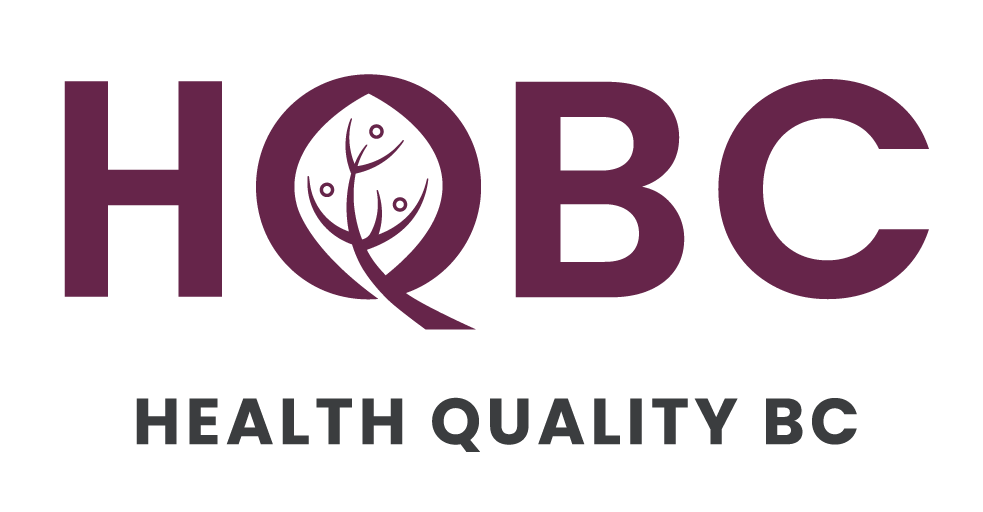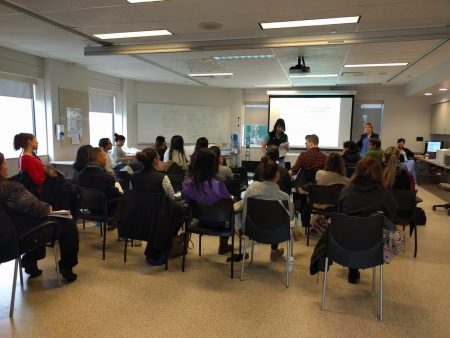Contributed by Jenifer Tabamo of Vancouver Coastal Health. Jenifer is a Clinical Nurse Specialist at Vancouver General Hospital (VGH), and a self-described “sepsis guru” who provides ongoing education to hospital unit staff.
Tell us a bit about the sepsis education you provide in your units.
Sepsis education has been fully implemented on three acute medicine (CTU) and four hospitalist medical units at VGH. The most recent addition: from March 2016 onwards, we’ve also began to include our two surgical units.
I’ve been involved as the “sepsis guru” for some time now. I provide monthly unit-based orientations, as well as advanced training for groups like the Canadian Nurses Association, Medical-Surgical and Gerontology specialty groups, the VGH Medicine Program Code Blue Trainings, VCH’s all-staff forum, and the Quality Forum, doing a rapid-fire presentation for sepsis. If I had to guess, I’ve reached close to 1,000 people.
What’s the most surprising thing you’ve encountered while providing this education?
Every time I provide this education to nursing staff, they just have this glow in their eyes and say, “Oh my god, how did this only happen now?” We need these tools because we encounter inpatient sepsis quite regularly. VGH is a training ground for new nursing staff – so the turnover alone reinforces the need for ongoing awareness and education. For a new nurse coming into one of our programs, most are not prepared to identify and treat sepsis.
What piece of your sepsis education work are you most proud of?
I have a learning module I use as a framework to provide consistency across groups and educators, but within the PowerPoint we use patient stories. These really resonate with nursing and clinical staff. We really focus on what a sepsis “state” looks like, to try to make it real for learners. We also talk about that entire patient journey, and what happens if we’re not able to recognize and treat sepsis early. How will that impact the patient for the rest of their hospital stay? What about after they leave?
I think that’s really powerful, when we use actual patient scenarios and stories. We always see a lot of nodding during this section. People will say, “Oh, that’s what sepsis looks like… and I’ve actually seen it before, and didn’t recognize it.”
So much of what we do right now is creating more person-centred care environments – providing person-centred clinical training is a huge part of that. Where do you see this type of training approach going in the next five years?
The person-centred care philosophy always goes back to the person in the patient. We want to work with our patients – and not treat them as numbers or statistics. We need to help new clinicians recognize the person behind the patient. We want to be able to manage situations with urgency while delivering compassionate, person-centred care. So as time goes on, I see the patient perspective becoming a more central part of our sepsis training.
What is the most challenging thing about promoting ongoing awareness of sepsis among care teams in your area?
VGH is a training ground for entry-to-practice staff – so there is high turnover for point-of-care staff, and leaders at all levels. We are constantly orientating new staff and meeting new leaders – all of the wards are. So I can never assume that we’ve provided orientation to a unit and the work is “done.”
When we help our staff to become competent in their practice, they often want to take the next step and tackle the next challenge! So they leave, because they are ready – and they take their sepsis knowledge with them. That’s the beauty of it – but it’s also a downside because we will need to continuously provide training. That’s a reality in a medical unit – so we’ve been able to proactively plan and strategize to ensure there is ongoing education for new staff.
As a medicine program with Clinical Teaching Units (CTUs), it’s also important to engage everyone on the care team – that includes allied health, interns, residents and physicians. So we work with people like the Chief Medical Resident, the medicine Medical Director and the hospitalist Medical Director to ensure the sepsis initiative is on their monthly agendas. In the units, we have nurse educators and nurse clinicians to ensure that formal leaders – who may be new as well – are aware of the sepsis initiative. Honestly, we are constantly looking for opportunities to inject information about sepsis – wherever we can! The tools are set – they just need to know they exist!
As you know, Change Day is coming up on November 17. A big part of Change Day is the impact individuals can have on health care – how small decisions can make a big difference. Do you have a pledge you want others to join?
I actually just participated and led “What Matters to You Day” for the medicine program at VGH this past summer… and now that it’s Change Day, I’ve been thinking a lot about how to put a patient lens on this. Last night, I was also checking out examples from the last Change Day – there are so many creative pledges out there that encourage person-centred thinking… things like eating a dysphasia diet really do put you in the patient’s shoes.
So my Change Day pledge is to figure out how to reconnect our sepsis work with patients and their families who have experienced sepsis. Now that we’re shifting the culture towards working with our patients as partners, I want to find tools to help empower and educate patients and families.
Sepsis can feel like such a big, frightening concept – people are often dumbfounded when they find out they had it and really not sure what it means. We’ve refined the clinical tools – now it’s time to work with patients and families to create tools for them too!
Learn more about sepsis and World Sepsis Day from the BC Sepsis Network!


